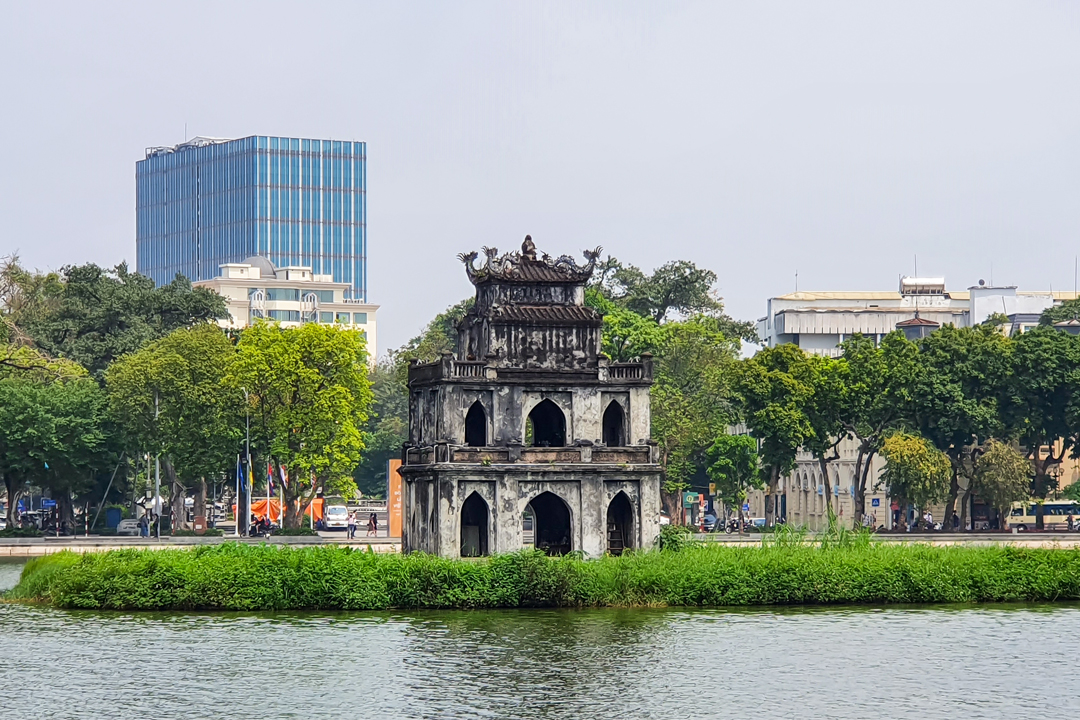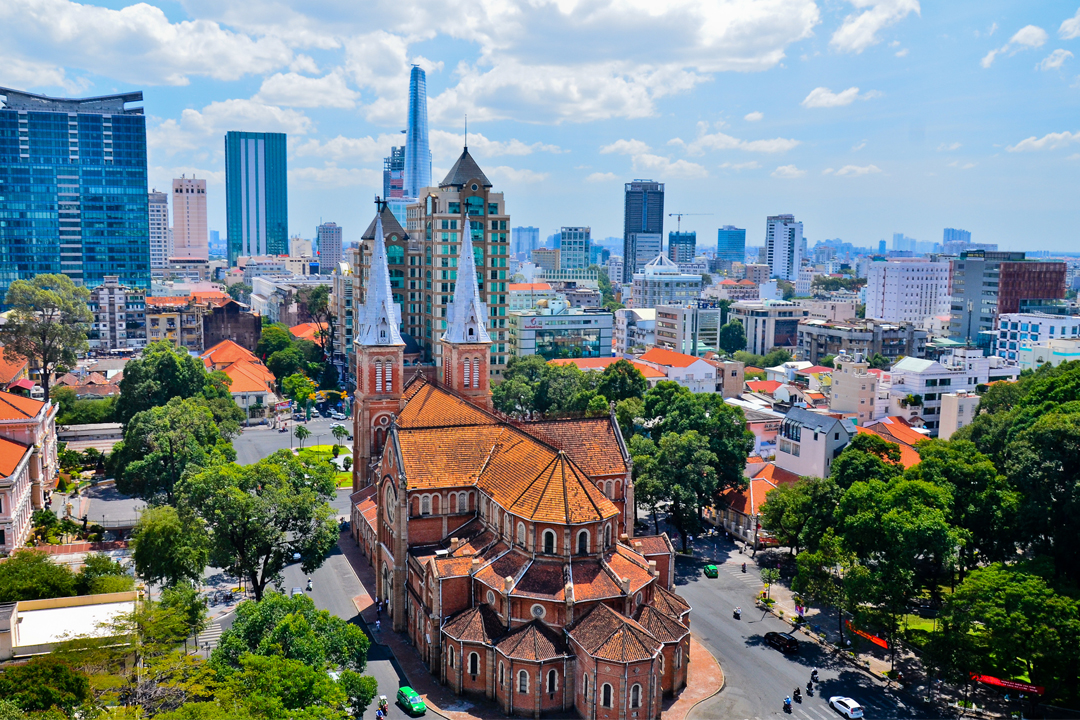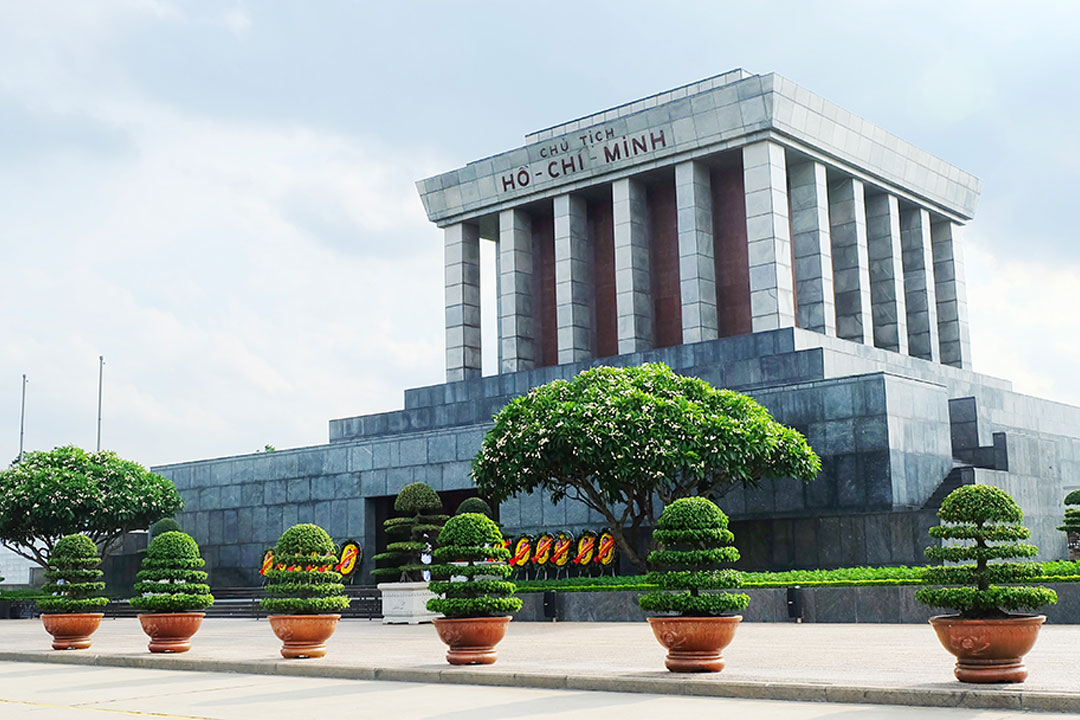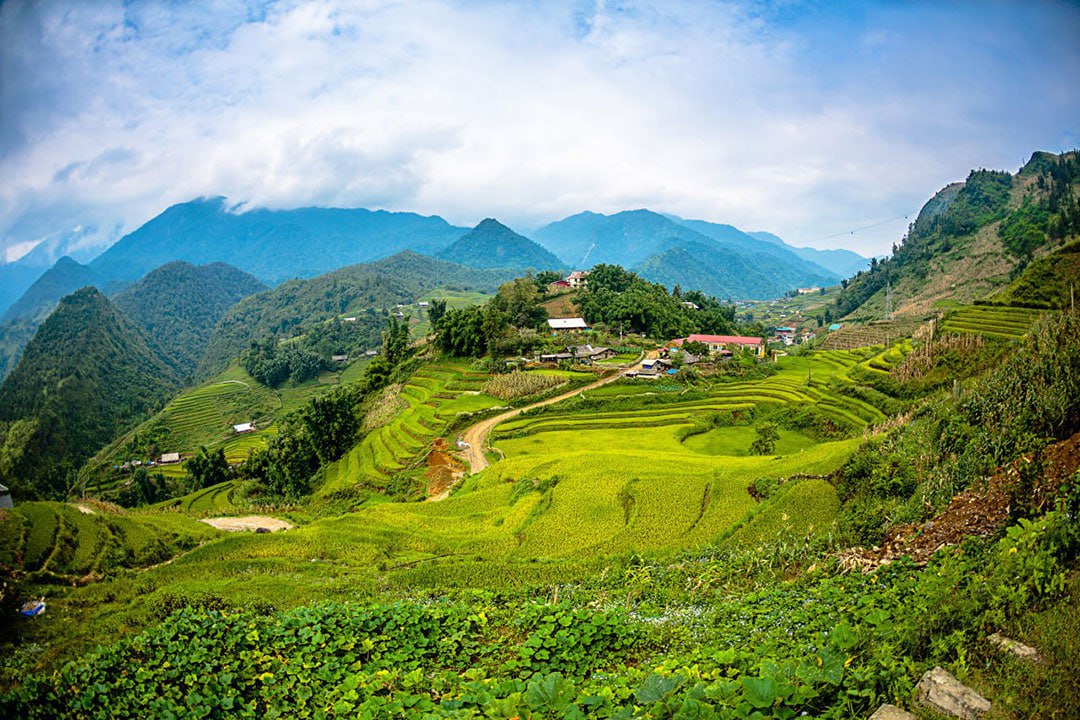Ha Noi Station: Overview, Historical Background, Facilities & Travel Guide
Ha Noi Station isn’t just a place to catch a train - it’s a historic landmark that has played a vital role in shaping the city’s transportation and cultural identity for over a century. Originally built during the French colonial era, its architecture is a striking blend of European influences and Vietnamese resilience. As one of the country’s busiest railway hubs, it serves as a gateway to Vietnam’s diverse landscapes, linking the capital to destinations like Sapa, Da Nang, and Ho Chi Minh City. For countless travelers, this station marks the beginning of unforgettable journeys across Vietnam.
Ha Noi Station is more than just a point of departure - it’s an integral part of the city’s everyday life. Nestled near the bustling Old Quarter and just a short ride from Hoan Kiem Lake, the station pulses with the rhythm of Hanoi itself. The station’s surroundings offer a glimpse into Hanoi’s rich heritage, with local eateries, colonial-era buildings, and vibrant street life. This creates an immersive experience before the train even leaves the platform.
Navigating Ha Noi Station can be an adventure in itself, especially for first-time tourists. Understanding its layout, ticketing process, and transportation links can make all the difference in ensuring a smooth journey. This guide of GTrip will equip you with everything you need to know about Ha Noi Station, from its storied past to practical travel tips that enhance your experience.
Overview of Ha Noi Station
Location: 120 Le Duan Street, Van Mieu - Quoc Tu Giam Ward (120 Le Duan Street, Van Mieu - Quoc Tu Giam Ward, Hoan Kiem District, Hanoi)
Ha Noi Station, or Hanoi Railway Station, is the primary railway hub of Vietnam's capital city, strategically located in the heart of the city. As one of the busiest transportation nodes in the country, it serves as a critical gateway for domestic train travel, connecting Hanoi with key destinations. The station is integral to Vietnam’s railway network, facilitating the daily movement of both residents and tourists.
Originally built during the French colonial era, Ha Noi Station's architecture reflects European influences combined with Vietnamese modernization efforts. While the main building retains its classic façade, renovations have been made to enhance its functionality and accommodate increasing passenger demand. The station’s historical significance and unique design make it a notable landmark in Hanoi.
Positioned between Van Mieu Ward and Cua Nam Ward in Hoan Kiem District, Ha Noi Station is easily accessible:
- Proximity to key landmarks: It is just a 5-minute drive from the Old Quarter and within walking distance of popular attractions like the Temple of Literature and Hoan Kiem Lake.
- Multiple transportation links: The station connects seamlessly with local buses, taxis, ride-hailing services like Grab, Be, Xanh SM, and motorbike rentals, offering versatile transportation options for travelers.
- Two main entrances: The A Building (Le Duan Street) serves long-distance routes, while the B Building (Tran Quy Cap Street) focuses on northern routes like Sapa.
Beyond its function as a transit point, Ha Noi Station is a significant starting point for exploring Vietnam:
- Backpackers & adventure travelers: It is a popular spot for those taking overnight trains to Sapa (Lao Cai), a famous trekking destination.
- Business & domestic commuters: Daily trains connect Hanoi with commercial hubs like Hai Phong (a major port city) and Ho Chi Minh City.
- Luxury train services: Premium options like the Victoria Express and Sapaly Express provide enhanced comfort for travelers seeking a more refined experience.
More than just a railway hub, Ha Noi Station is a historical landmark and a symbol of Vietnam’s evolving transportation landscape. Its role extends beyond travel logistics, serving as a window into the country's rich cultural heritage and dynamic urban life.
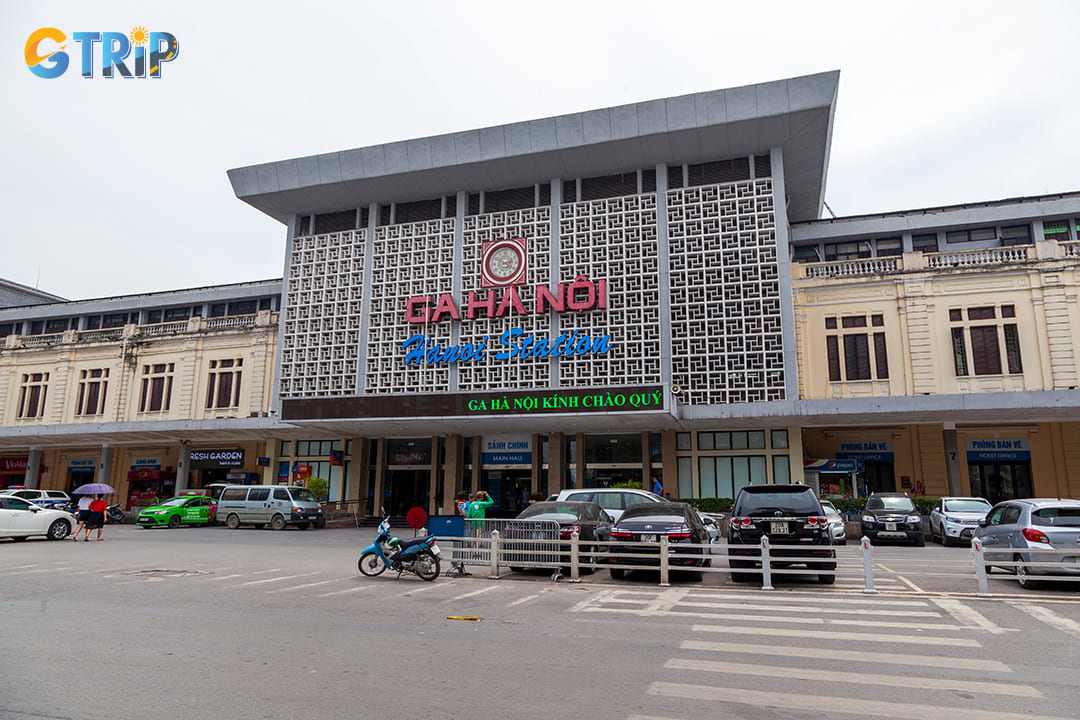
Ha Noi Station, or Hanoi Railway Station, is the primary railway hub of Vietnam's capital city
Historical background affects the architecture of Ha Noi Station
Ha Noi Station, one of Vietnam’s most significant railway hubs, stands as a testament to the city’s evolving transportation landscape and colonial history. The station reflects both historical resilience and architectural transitions. Below, we delve into its key historical milestones, unique architectural features, and restoration efforts.
The history of Ha Noi Station
Established during the French colonial period, the Ha Noi Station initially served as a strategic part of the Indochina railway network. It links northern Vietnam, China, and other areas under French rule. Officially inaugurated in 1902 and originally named Gare de Hanoï, the station played a crucial role in facilitating trade and transportation, symbolizing the colonial ambition of economic integration. By 1936, it had become the starting point of the Trans-Vietnam railway, stretching 1,700 kilometers to Saigon.
During the Vietnam War, the station played a vital role in troop transportation. However, it suffered significant damage during the 1972 bombings, leading to the collapse of its main hall. Post-war reconstruction introduced a modern architectural style to the central hall, while the original French colonial design was preserved in the side wings.
From 1976 to the present, Ha Noi Station underwent substantial renovations to address the demands of a growing population and economy. While the reconstruction retained some elements of the original design, the central hall was rebuilt in a more functional, utilitarian style reflective of the socialist era. Today, the station stands as a blend of colonial heritage and modern functionality, symbolizing the resilience of Hanoi and its adaptation to the city's ongoing urban development.
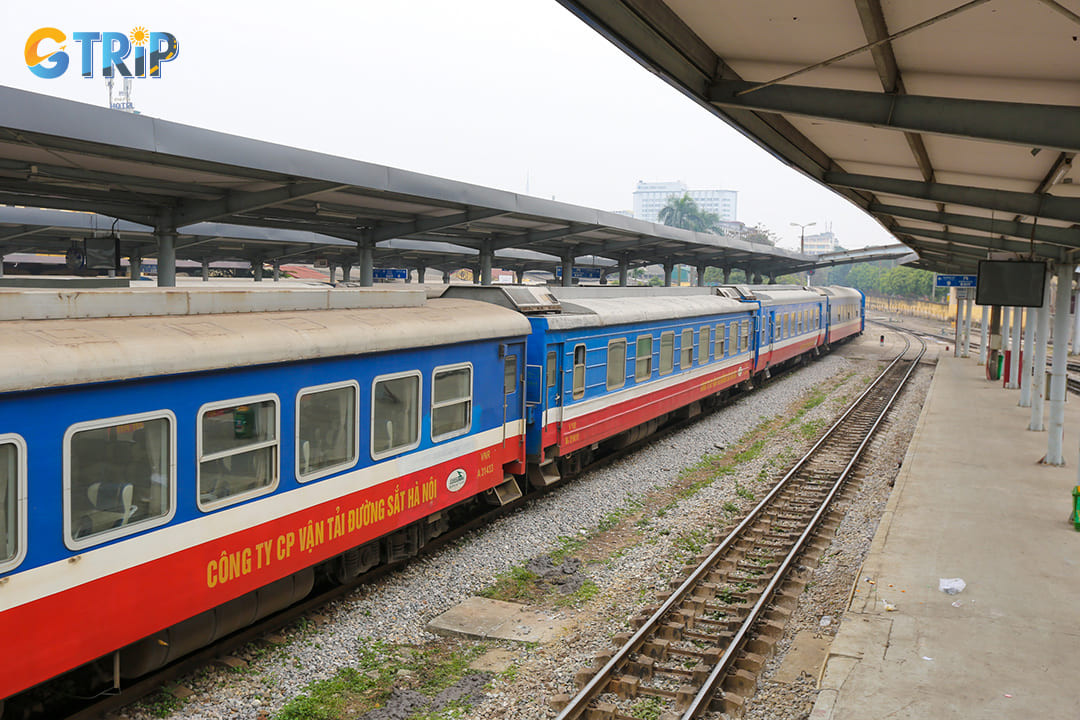
Established during the French colonial period, the Ha Noi Station initially served as a strategic part of the Indochina railway network
French colonial influence with unique architectural elements
Ha Noi Station’s architecture is a blend of French colonial design and modern Vietnamese influences, shaped by both historical necessity and restoration efforts. The original design was heavily inspired by European railway stations of the late 19th and early 20th centuries. Below are some key architectural features:
Original French colonial elements (1902 - 1970s):
- Grand facade: The original structure featured a symmetrical façade with large arched windows, a characteristic of Beaux-Arts architecture.
- High ceilings & spacious waiting areas: Designed for natural ventilation in Hanoi’s humid climate.
- Ornate metalwork: Decorative iron framework and intricate detailing, common in colonial-era public buildings.
Post-war reconstruction & modern additions (1976 - present):
- Central glass facade: A stark contrast to the original colonial style, added during the 1980s restoration after war damage.
- Functional upgrades: Wider platforms, modern ticketing areas, and improved accessibility.
- Structural reinforcements: To accommodate increased passenger volume and ensure safety compliance.
Despite its modifications, Ha Noi Station retains elements of its colonial past, making it a unique blend of historical and contemporary architecture.
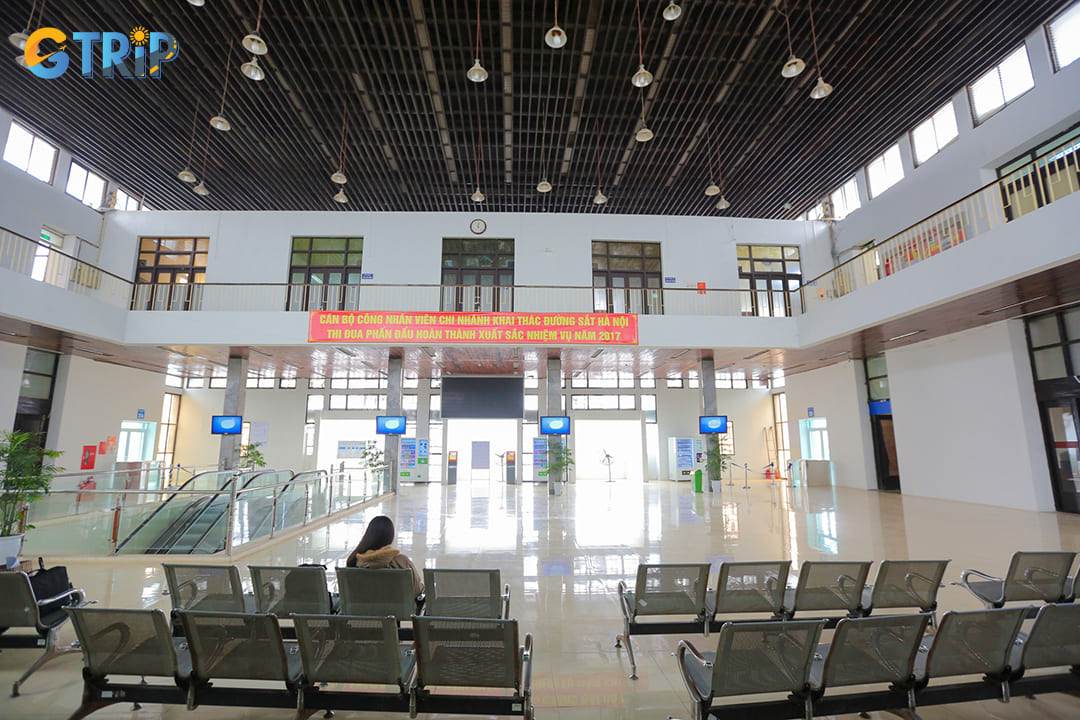
Ha Noi Station’s architecture is a blend of French colonial design and modern Vietnamese influences
Train services and routes operating from Ha Noi Station
Ha Noi Station serves as a central artery for Vietnam Railways, managing various train routes that extend throughout the country. The station operates multiple types of services, catering to a broad spectrum of travelers, from daily commuters to international tourists.
Operating hours
Hanoi Railway Station is serving passengers with many trains to provinces and cities across the country. The station's opening hours usually start in the early morning and last until late at night, to meet the travel needs of passengers. According to information from the Vietnam Railways Corporation website, passengers can buy tickets directly at Hanoi Railway Station during the following time frames:
- Area A: Operating from 8:00 AM to 10:30 PM.
Area A can be accessed from 120 Le Duan Street, Cua Nam Ward, Hoan Kiem District, Hanoi. It primarily serves long-distance train routes like the North-South Reunification Express to Ho Chi Minh City and popular routes to cities like Da Nang, Hue, and Nha Trang. As the busiest part of the station, it features ticket counters, waiting areas, and basic amenities for travelers.
- Area B: Operating from 5:10 AM to 6:00 AM, 8:00 AM to 11:30 AM, and 14:00 PM to 17:30 PM.
Area B can be accessed from 1 Tran Quy Cap Street, Van Mieu Ward, Dong Da District, Hanoi. It mainly caters to regional and shorter-distance train routes like those to Lao Cai (Sapa), Hai Phong, and Dong Dang near the China border. It has fewer facilities than Area A but tends to be less crowded, making it more convenient for quick regional commutes.
Main train lines and routes
- North-South Reunification Express: The most popular and extensive route, running from Ha Noi to Ho Chi Minh City. It covers major cities like Hue, Da Nang, and Nha Trang, connecting the northern and southern regions of Vietnam.
- Hanoi to Lao Cai (Sapa) Line: Known for its picturesque scenery, this line is popular among tourists heading to the mountainous region of Sapa.
- Hanoi to Hai Phong Line: Primarily used by locals and travelers visiting the coastal city of Hai Phong, a gateway to Cat Ba Island and Ha Long Bay.
- Hanoi to Dong Dang Line: This international route heads towards the Vietnam-China border, serving cross-border trade and tourism.
Train services offered
- Express trains: Faster, more comfortable services with air-conditioned coaches, sleeper cabins, and dining facilities. Ideal for long-distance travel.
- Local trains: Slower, more economical options often used by locals for shorter commutes. These usually have basic seating arrangements.
Frequency and scheduling
The station typically operates multiple departures daily for major routes, with increased frequency during peak holiday seasons like Tet (Lunar New Year), and Independence Day. Timetables are subject to change, so checking updated schedules on the official Vietnam Railways website is recommended.
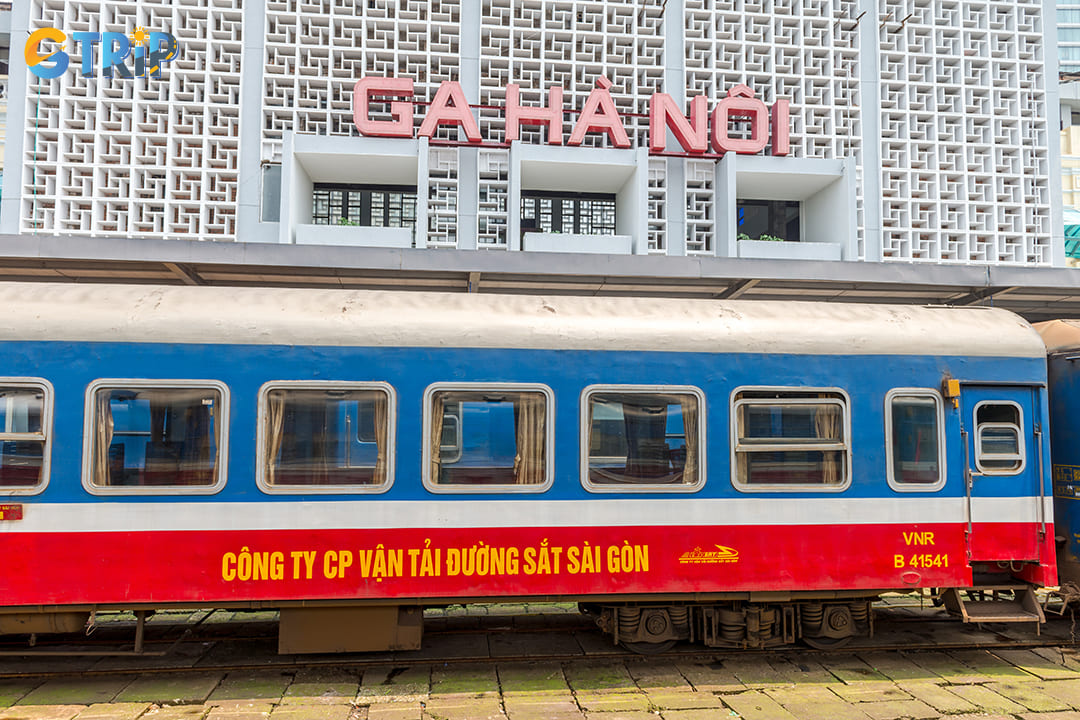
Ha Noi Station serves as a central artery for Vietnam Railways, managing various train routes that extend throughout the country
On-site facilities and amenities of Hanoi Station
Ha Noi Station serves as one of the busiest and most historically significant train stations in Vietnam. It offers a range of on-site facilities and amenities designed to accommodate the needs of both local commuters and international travelers. Divided into two main sections, Station A and Station B, each caters to specific routes, services, and traveler demographics.
Ticketing services: Streamlined access for diverse travelers
Ha Noi Station’s ticketing facilities are structured to handle a high volume of passengers while maintaining efficiency. Ticketing options are accessible through multiple channels to cater to various preferences:
- Ticket counters: Located prominently in both Station A and Station B, staffed by trained personnel who can assist with bookings, route information, and changes. Counters generally operate around 5:00 AM to 10:00 PM daily.
- Automated ticket machines: Positioned near the main entrance and in waiting areas, allowing passengers to purchase tickets using cash or local bank cards. These machines support English and Vietnamese, making them tourist-friendly.
- Online booking services: Official websites of Vietnam Railways and authorized third-party agencies provide online booking services. This method is popular among tech-savvy travelers and those planning in advance.
- Mobile applications: Vietnam Railways offers an official mobile app called "Ve tau" that enables online booking, seat selection, and ticket retrieval via QR codes, minimizing physical contact and streamlining the boarding process.
Types of tickets available:
- Standard tickets: Primarily for short-distance routes within Northern Vietnam.
- Express and luxury tickets: For long-distance travel to major cities like Ho Chi Minh City and Da Nang.
- Tourist packages: Inclusive of guided services and amenities for international tourists.
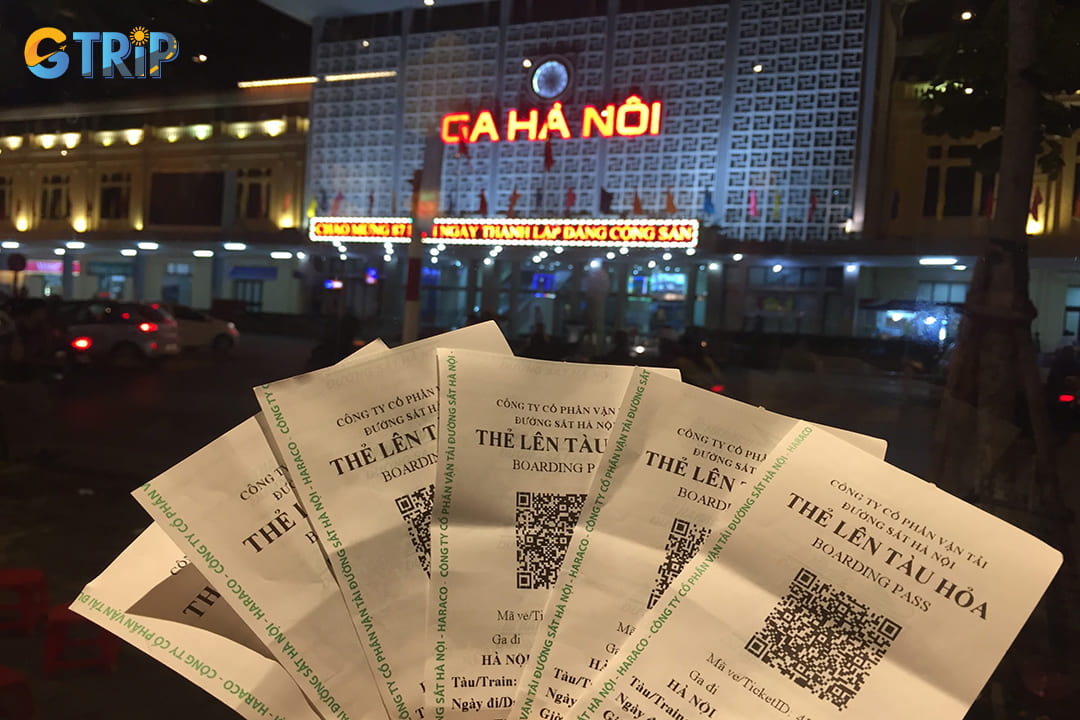
Ha Noi Station’s ticketing facilities are structured to handle a high volume of passengers while maintaining efficiency
Waiting areas: Comfort and convenience for all
Ha Noi Station has made significant improvements in its waiting areas, providing a blend of traditional and modern design to accommodate diverse passenger needs. These areas are distributed across both Station A and Station B, each serving distinct passenger groups.
- Standard waiting areas: Equipped with metal benches, electronic screens displaying departure and arrival schedules, and loudspeakers announcing train information in both Vietnamese and English.
- VIP lounges: Available for premium ticket holders and travelers on express routes. These lounges provide cushioned seating, complimentary wi-fi, charging stations, and refreshments.
- Air-conditioned spaces: Essential during the humid summer months, creating a more comfortable experience for travelers waiting for long-haul trains.
- Restrooms: Clean and regularly maintained, with separate sections for men and women.
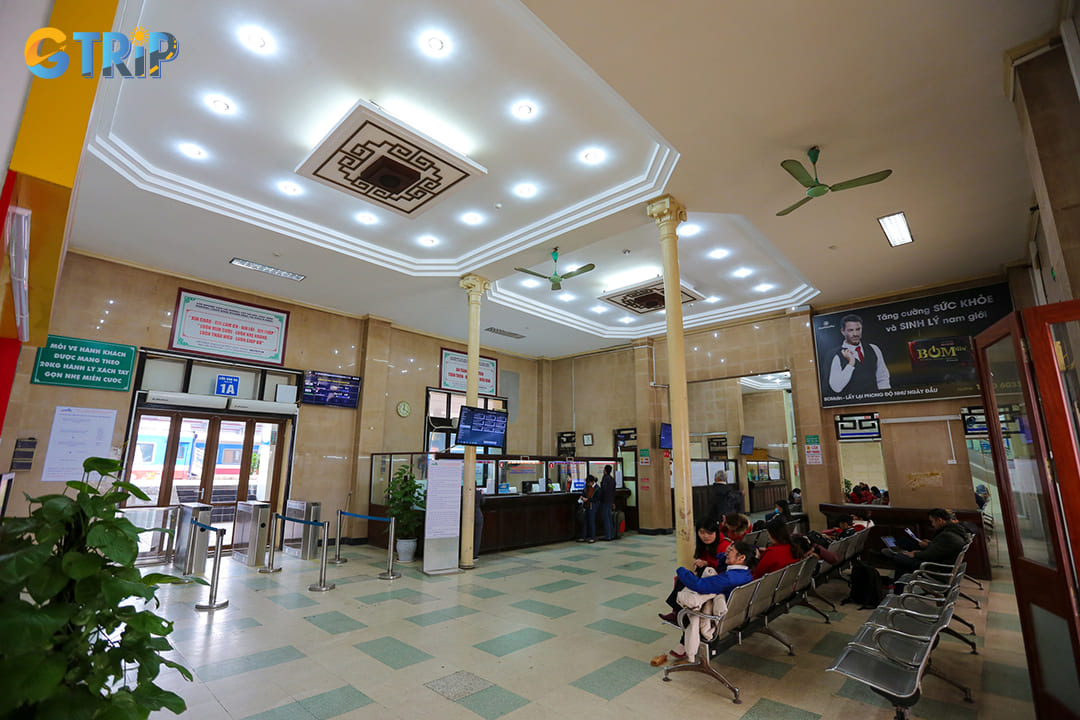
Ha Noi Station has made significant improvements in its waiting areas, providing a blend of traditional and modern design
Retail and dining options: Meeting travel essentials
To enhance the overall experience, Ha Noi Station provides a variety of retail and dining choices, catering to both quick convenience and more leisurely shopping or dining experiences.
- Convenience stores: Located near the main entrances and waiting areas, offering snacks, beverages, travel essentials like SIM cards, toiletries, and over-the-counter medications.
- Souvenir shops: Selling traditional Vietnamese products such as conical hats, lacquerware, and postcards - appealing to international tourists seeking local mementos.
- Cafes and fast food outlets: Brands like Highlands Coffee and local street food vendors serve Vietnamese coffee, banh mi (Vietnamese sandwiches), and pho.
- Formal dining options: For travelers with extended waiting times, there are sit-down restaurants offering a wider variety of Vietnamese and international dishes.
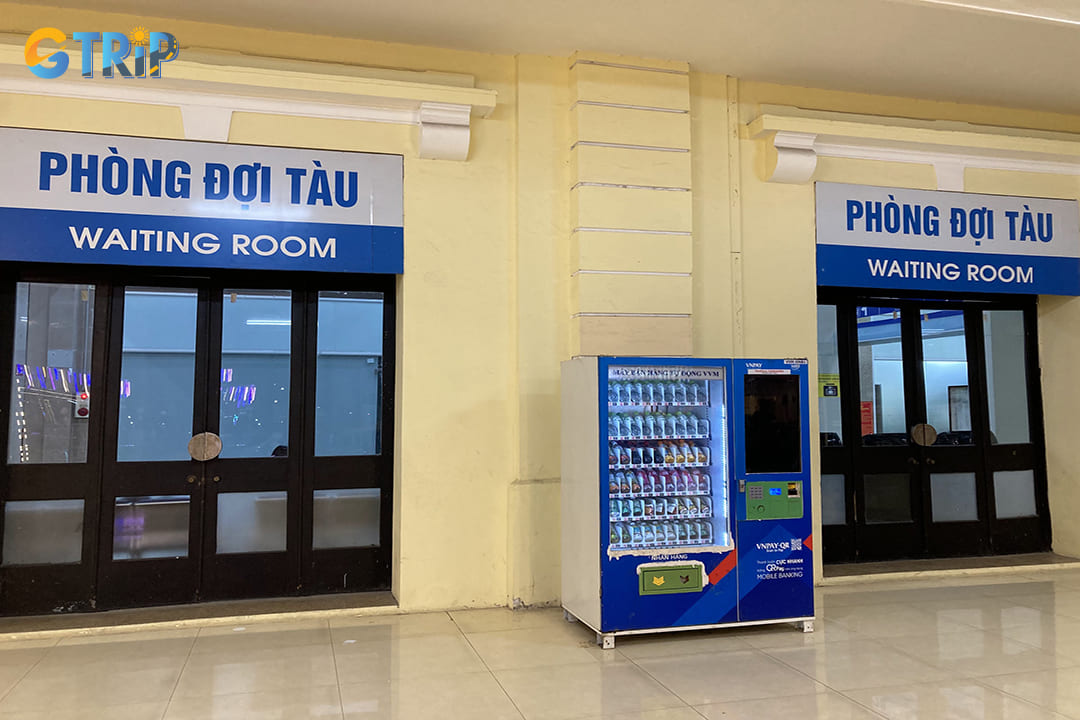
Ha Noi Station provides a variety of retail and dining choices
Other on-site facilities: Accessibility and travel support
- Luggage services: There are baggage storage facilities available for short-term use, making it easier for travelers exploring Hanoi before or after their train journey.
- Information desks: Staffed by bilingual personnel, offering assistance in navigation, train schedules, and tourist information. The main desk is strategically positioned near the entrance of Station A.
- ATM and currency exchange: Found in both Station A and Station B, providing quick access to financial services.
- Travel agencies: Offering tour packages, hotel bookings, and transportation services to popular destinations like Ha Long Bay, Ninh Binh, and Sapa.
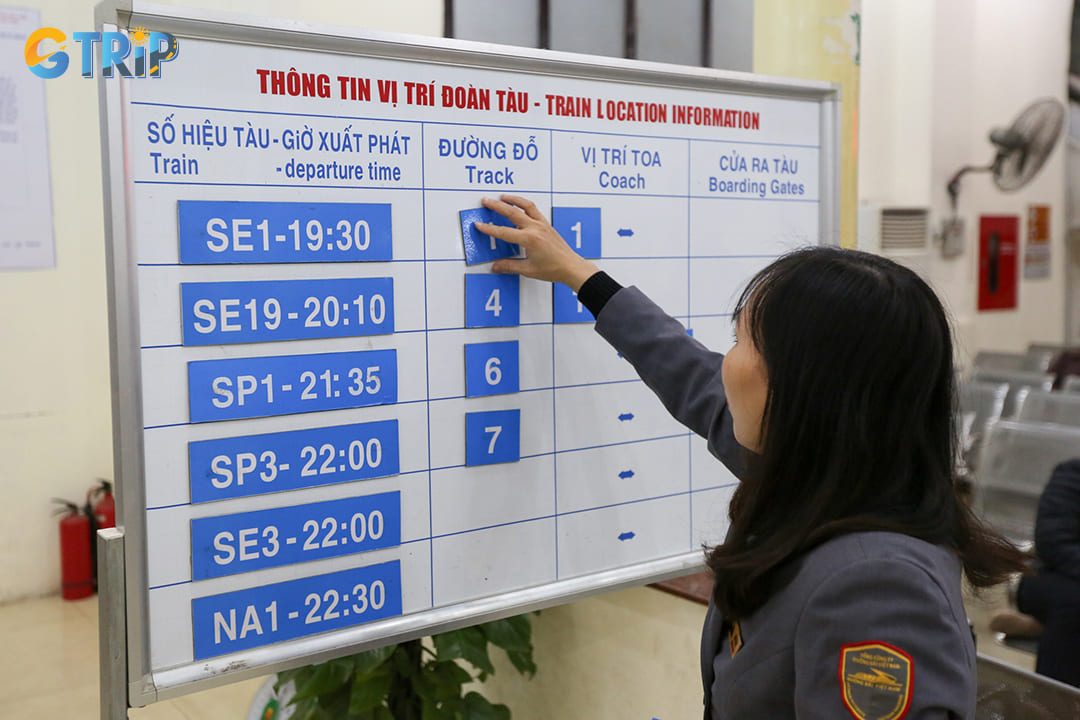
Information desks offer assistance in navigation, train schedules, and tourist information
Safety and security measures
To ensure passenger safety, Ha Noi Station maintains strict security protocols:
- Security checkpoints: Screening luggage and personal belongings to prevent prohibited items.
- Surveillance: CCTV cameras monitor all key areas of the station, ensuring round-the-clock safety.
- Emergency services: Medical aid stations and first-aid kits are readily available, and emergency exits are clearly marked.
Ha Noi Station's comprehensive range of on-site facilities and amenities supports its status as a critical transportation hub in Vietnam. By catering to various passenger needs, the station ensures an efficient, comfortable, and culturally immersive experience for all travelers.
3 things to do when visiting Ha Noi Station
Visiting Ha Noi Station isn't just about catching a train, it's an opportunity to immerse yourself in a slice of Hanoi's cultural and historical essence. Here are some meaningful activities to make the most of your time at Ha Noi Station:
1. Capture memorable photos
Ha Noi Station is a treasure trove for photography enthusiasts. The station's colonial-era architecture, combined with the bustling modern life outside, creates a dynamic contrast that is visually captivating. The facade of the station, adorned with its vintage signage, evokes a sense of nostalgia, making it a prime spot for photos. Inside, you’ll find a blend of travelers from different walks of life, adding a vibrant human element to your shots.
As you explore the area, consider venturing into the nearby alleys, where street vendors sell traditional snacks and motorbikes whizz by. These narrow, lively streets capture the essence of Hanoi’s urban chaos, contrasting beautifully with the stillness of the tracks and the waiting rooms inside the station. If you're interested in street photography, the mix of old and new, tradition and modernity, will offer you plenty of inspiration.
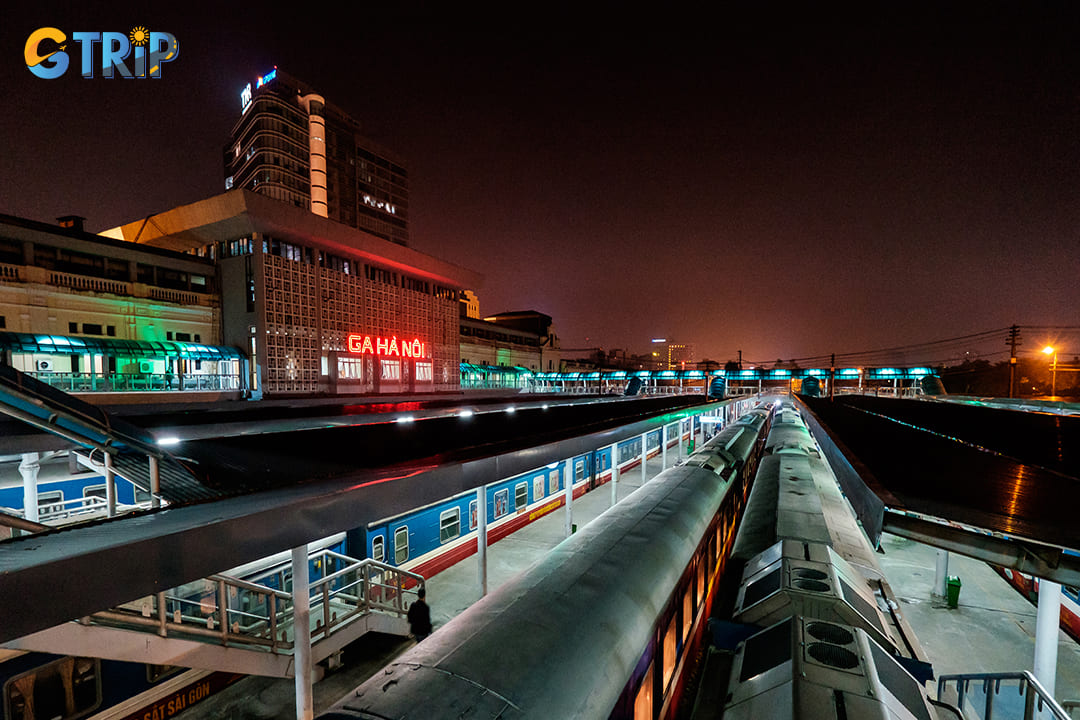
Ha Noi Station is a treasure trove for photography enthusiasts
2. Experience Hanoi train street
A short 900-meter walk from Ha Noi Station lies the iconic Hanoi train street - one of the city's most popular yet intriguing attractions. Here, you can witness the rare spectacle of a train passing mere inches from residential homes and cozy cafes. The thrill of watching a train glide through the narrow alleyways while locals carry on with their daily routines is a unique experience you won't find elsewhere.
To make the most of your visit, plan to arrive a bit before the scheduled train passage. Grab a coffee from a trackside cafe and soak in the atmosphere - the anticipation, the sudden rush of the train, and the quick return to calmness afterward. Many cafes have adapted to welcome curious tourists, offering safe spots to watch the trains pass while savoring traditional Vietnamese coffee. However, it's essential to respect local rules and maintain caution, as recent safety regulations may limit access to certain areas.
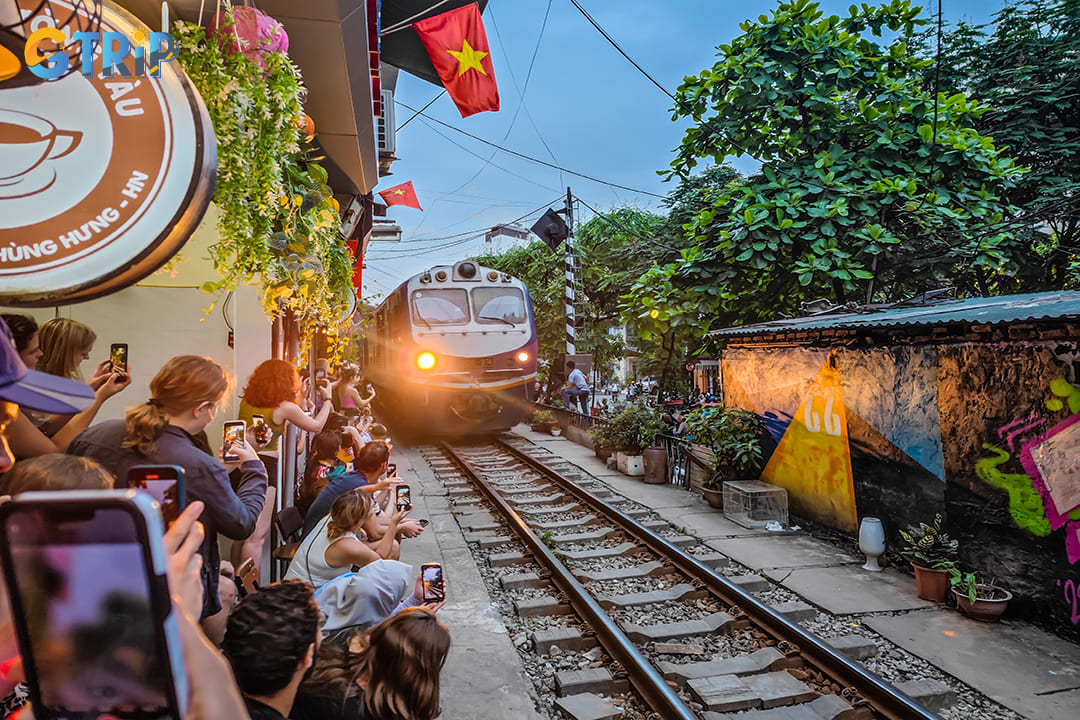
You can witness the rare spectacle of a train passing mere inches from residential homes and cozy cafes
3. Exploring local food and markets
Beyond historical and cultural landmarks, the areas surrounding Ha Noi Station offer diverse shopping and dining experiences. Exploring local markets and savoring authentic Hanoi cuisine is an integral part of understanding the city's culture.
Shopping experiences:
- Trang Tien Plaza: A luxury shopping center near Hoan Kiem Lake, featuring international brands.
- Hang Da Market: A blend of traditional and modern shopping, offering souvenirs, clothing, and local crafts.
- Night markets: Weekend night markets in the Old Quarter provide a lively shopping experience for both locals and tourists.
Street food and local eateries:
- Pho Thin on Lo Duc Street: Renowned for its rich broth.
- Bun cha Huong Lien: Famously visited by former U.S. President Barack Obama.
- Banh cuon gia truyen: Traditional Vietnamese steamed rice rolls.

You should try Bun cha when visiting Hanoi Station in Hanoi
How to get to Ha Noi Station?
Ha Noi Station serves as a pivotal gateway connecting the capital to numerous provinces and cities across Vietnam. Its accessibility is crucial for both domestic travelers and international tourists seeking to explore Hanoi or continue their journey to other parts of the country. Understanding how to reach Ha Noi Station efficiently can save time, reduce stress, and enhance the overall travel experience. Below, we outline the most practical transportation modes and directions to reach the station.
1. By taxi or ride-hailing services (Grab, Be, Xanh SM)
Taxi services: Traditional taxi companies like Mai Linh and G7 operate in Hanoi and can be conveniently hailed on the street or booked via phone. Taxis are generally reliable, and drivers are familiar with the main routes to Ha Noi Station.
- Estimated fare: 50,000 - 100,000 VND (~2 to 4 USD) from the Old Quarter, depending on traffic.
- Travel time: 10 to 20 minutes.
Ride-hailing apps: Popular apps like Grab, Be, and Xanh SM offer convenient, cashless payment options. These services usually have competitive pricing compared to traditional taxis.
- Tip: Ensure your pick-up location is accurately pinned on the app, especially if you’re in a crowded area like the Old Quarter.
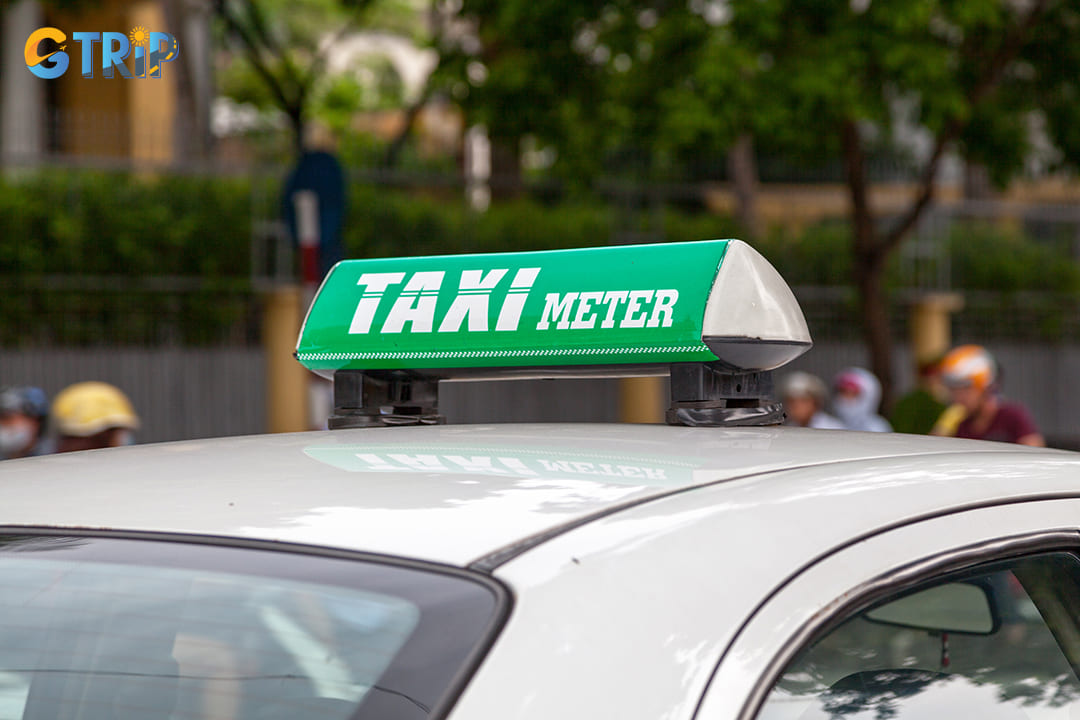
Traditional taxis can be conveniently hailed on the street or booked via phone
2. By local bus
Bus routes serving Ha Noi Station: Hanoi has an extensive public bus network managed by Transerco. Several routes connect to the vicinity of Ha Noi Station, such as:
- Bus 01: Goes from Long Bien - Gia Lam through Hoan Kiem Lake and stops near the station.
- Bus 32: Connects from Nhon - Giap Bat with a stop close to the station.
- Bus 34: Runs between My Dinh Bus Station - Gia Lam Bus Station and stops at Le Duan Street.
Fare: Typically 7,000 - 9,000 VND (less than 0.5 USD).
Travel time: Ranges from 15 to 30 minutes depending on traffic.
Tips for travelers:
- Ensure you have small denominations for cash payments.
- Download the Timbuyt app (official Hanoi bus app) for real-time bus schedules and routes.
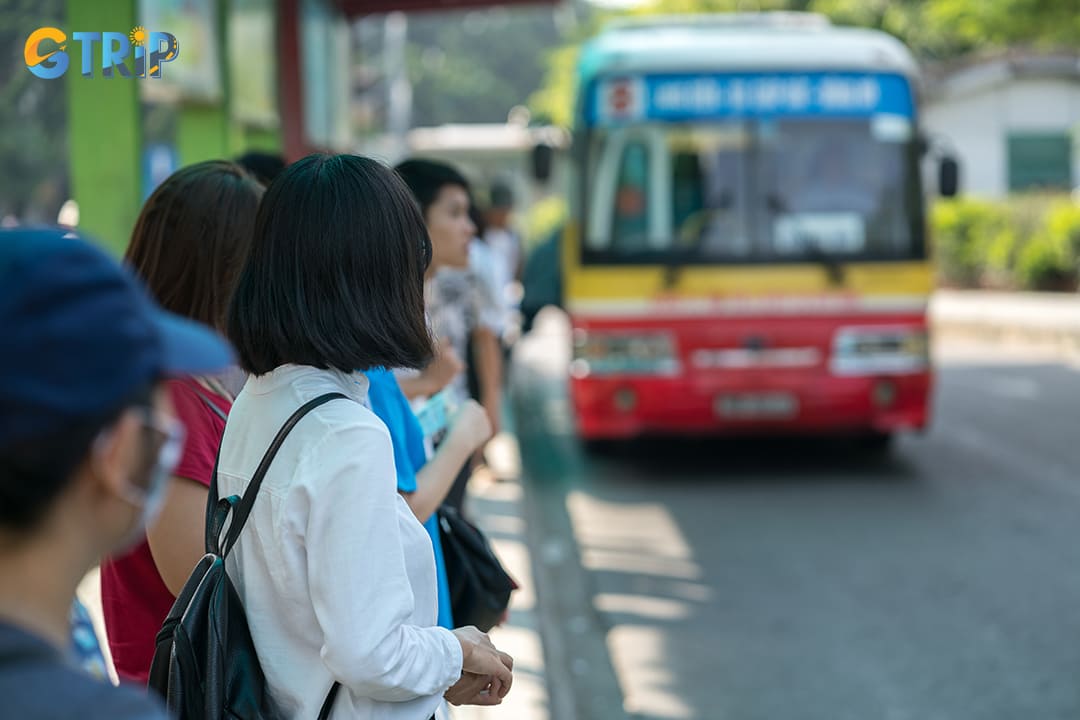
You can easily reach Hanoi Station by taking the local bus
3. By walking from the Old Quarter
Ha Noi Station is approximately 1.5 to 2 km from the Old Quarter, making it a walkable distance for those who prefer exploring on foot. Walking offers a chance to experience Hanoi's lively streets and traditional architecture. However, be cautious of traffic and uneven sidewalks.
Tip: Use Google Maps or Maps.me for precise walking directions.
Comparison of transportation modes to Ha Noi Station
| Mode of transport | Cost (VND) | Travel time (Minutes) | Convenience for tourists |
|---|---|---|---|
| Taxi/Ride-Hailing | 50,000 - 350,000 | 10 - 60 | High (door-to-door) |
| Local Bus | 7,000 - 9,000 | 15 - 30 | Moderate (language barrier) |
| Walking (Old Quarter) | Free | 15 - 25 | High (if nearby) |
Reaching Ha Noi Station is generally straightforward, thanks to the station’s strategic location and multiple transit options. However, the choice of transportation should align with individual preferences regarding time, budget, and comfort. For most travelers, a combination of taxis or ride-hailing services from the Old Quarter and Bus 86 from Noi Bai Airport provide the most efficient and convenient routes. If you need further assistance or have specific questions, feel free to ask locals or check reliable travel resources like Vietnam Railways or the official Hanoi public transportation website.
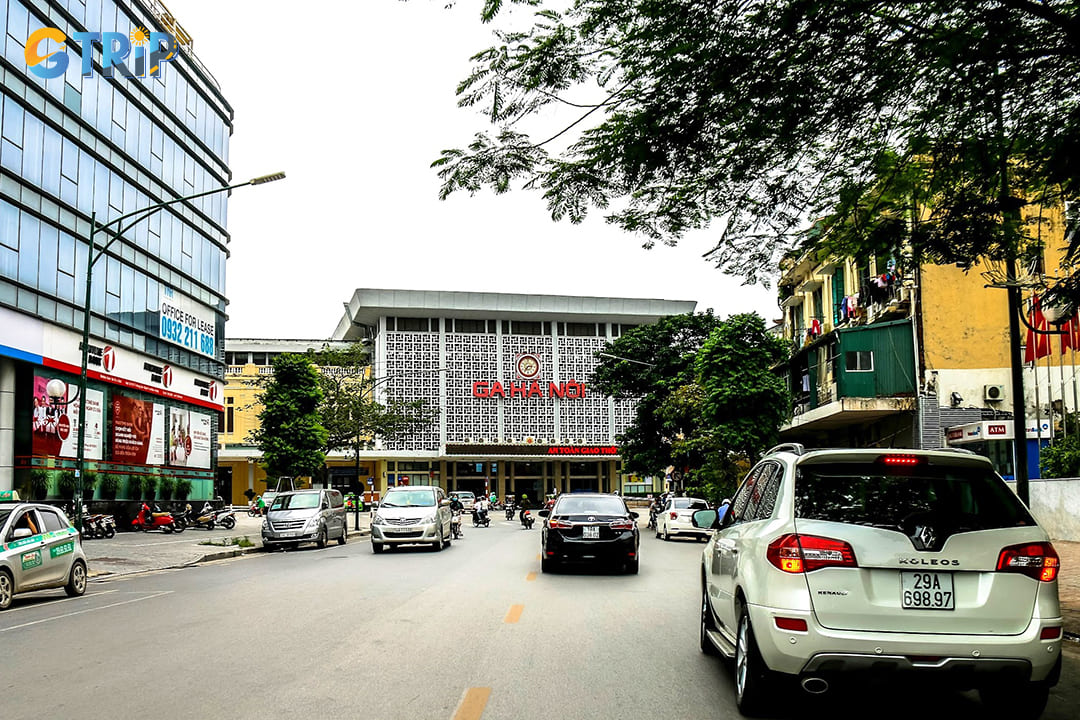
Reaching Ha Noi Station is generally straightforward, thanks to the station’s strategic location and multiple transit options
Visitor information & practical guide
When planning a visit to Ha Noi Station, understanding its practical aspects is essential for a smooth experience. This guide covers accessibility features, safety considerations, and practical tips for both newcomers and seasoned travelers.
Accessibility features and tips for navigating the station
Ha Noi Station, as a major transportation hub in Vietnam, aims to cater to a diverse range of travelers, including people with disabilities, elderly passengers, and those traveling with young children. However, like many older stations worldwide, there are challenges and limitations. Here's a comprehensive look at what to expect:
- Entrances and exits: The main entrance of Ha Noi Station is accessible via Le Duan Street, a bustling road with heavy traffic. While the primary entrance has steps, there are ramps available for wheelchair access. Side entrances may not be as accessible, so it is recommended to use the main entry points.
- Facilities for disabled travelers: Wheelchair users may face difficulties as the station has limited designated waiting areas. Public restrooms are available, though accessibility standards may not fully align with international norms. If you need special assistance, it is advisable to contact Vietnam Railways ahead of your visit to coordinate support.
- Signage and information: Signage in Ha Noi Station is primarily in Vietnamese, with limited English translations. Travelers unfamiliar with the language should prepare in advance by noting key Vietnamese phrases or using translation apps. There are information desks near the main hall, but staff English proficiency can vary.
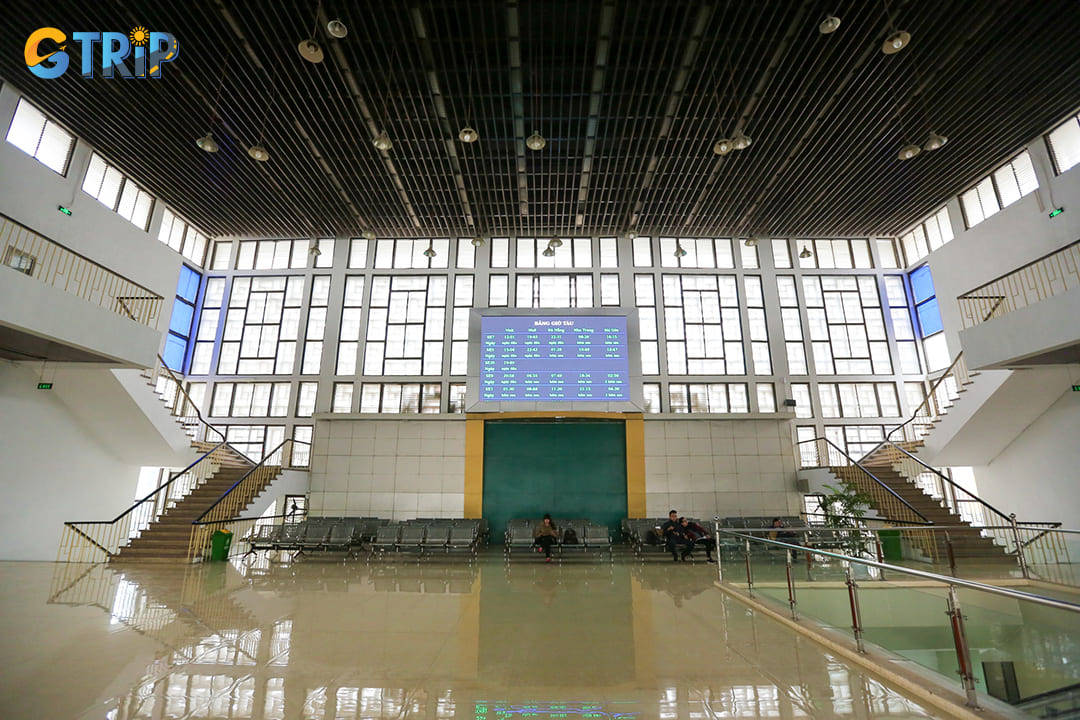
Ha Noi Station, as a major transportation hub in Vietnam, aims to cater to a diverse range of travelers
Tips for smooth navigation:
- Arrive early: The station can become crowded, particularly during peak hours (early mornings and late afternoons). Arriving 30 - 45 minutes before departure helps navigate crowds.
- Secure luggage: Keep personal belongings close, especially in crowded waiting areas.
- Language barriers: Carry a written version of your destination in Vietnamese to show to staff if needed or use Google Translate.
- Elderly and families: If traveling with young children or elderly individuals, request assistance from station staff for safer navigation.
Essential information for first-time visitors
For first-time visitors, understanding the practicalities of navigating Ha Noi Station can prevent unnecessary stress. The station's busy nature and language differences can present challenges, but with the right preparation, your experience can be seamless.
Best times to visit:
- Peak hours: 6:00 AM - 9:00 AM and 4:00 PM - 7:00 PM. These times see a high volume of commuters traveling for work or long-distance journeys.
- Off-peak times: Mid-morning and early afternoon (10:00 AM - 3:00 PM) are quieter, making it easier for leisurely travelers.
Safety considerations:
- Personal security: Ha Noi Station, while generally safe, is a busy hub with a high volume of people. Petty theft like pickpocketing can occur, so keep valuables secure.
- Scams and overcharging: Be cautious of unauthorized ticket sellers. Always purchase tickets from official Vietnam Railways counters or reputable online platforms.
- Health and hygiene: Public restrooms may not meet all international hygiene standards. Carry personal sanitizing wipes or tissues.
Ticketing and documentation:
- Ticket purchase: It's recommended to buy tickets in advance during peak travel seasons, such as Tet Holiday (Vietnamese Lunar New Year) and National Day. E-tickets are becoming more popular and can be scanned via smartphones.
- Required documentation: Always carry identification (passport for international travelers) as ticket checks are common before boarding.
Local transportation connections:
- Taxis and ride-hailing: Official taxis are available outside the main entrance. Popular ride-hailing apps like Grab can be used for more convenient rides.
- Public buses: Several bus lines connect Ha Noi Station to key parts of the city, including the Old Quarter and Hoan Kiem Lake. Check for route numbers and schedules at the station or online.
Other tips for foreign visitors:
- Have a local SIM card or reliable internet access for navigation and translation.
- Carry small denominations of Vietnamese Dong (VND) for purchases, as not all vendors accept cards.
- If lost, showing the address “Ga Ha Noi, 120 Le Duan” to locals can help you find your way.
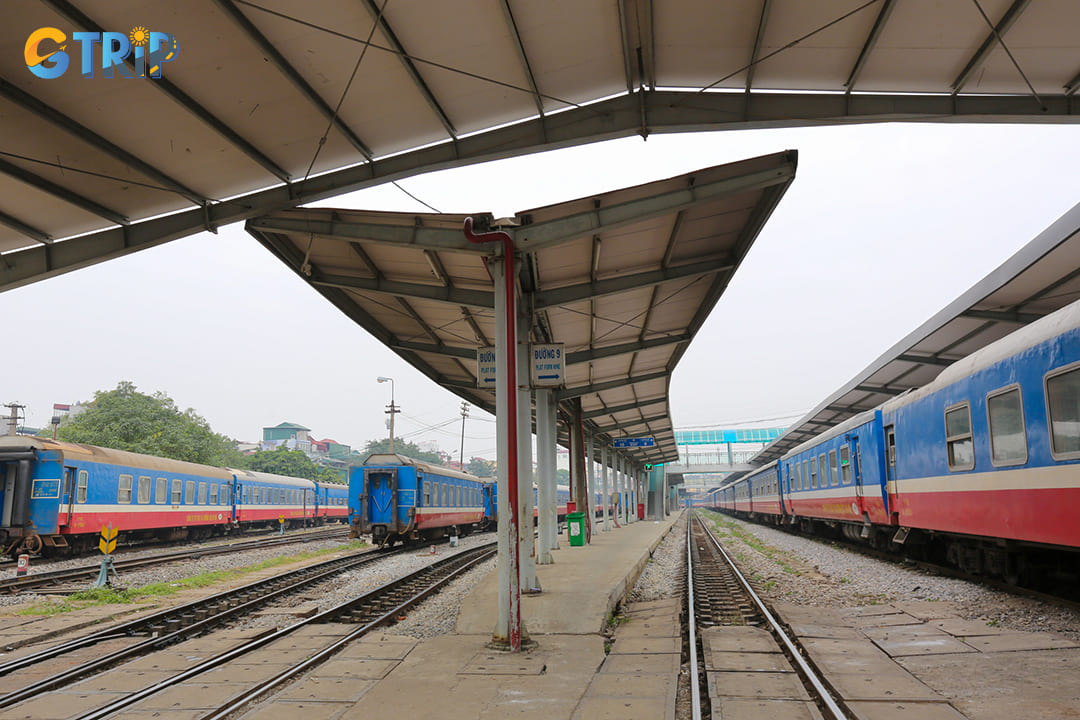
For first-time visitors, understanding the practicalities of navigating Ha Noi Station can prevent unnecessary stress
Nearby attractions from Hanoi Train Station
Ha Noi Station not only serves as a critical transportation hub but also as a gateway to exploring some of the city's most iconic landmarks and cultural experiences. The station’s central position in Hoan Kiem District offers travelers convenient access to a variety of attractions that showcase Hanoi’s historical, cultural, and modern vibrancy.
Hanoi Old Quarter (1.9 km)
The Hanoi Old Quarter, just about 1.9 kilometers from Ha Noi Station, is a maze of narrow streets brimming with history. Dating back over a thousand years, this area reflects the city’s blend of Vietnamese, Chinese, and French influences. Known for its "36 streets", each named after a traditional trade or craft, the Old Quarter captures the essence of Hanoi's past while embracing modernity.
What to experience:
- Wander through the ancient streets to discover traditional handicrafts like silverwork on Hang Bac or silk goods on Hang Gai.
- Visit historic temples like Bach Ma Temple, one of the oldest in Hanoi.
- Explore Dong Xuan Market, the largest wholesale market in Hanoi, offering everything from textiles to street food.
- Indulge in local street food such as pho bo (beef noodle soup), bun cha (grilled pork with noodles), and Vietnamese egg coffee.
Accessibility: From Ha Noi Station, the Old Quarter is a 5-minute taxi ride or around a 15-minute walk.
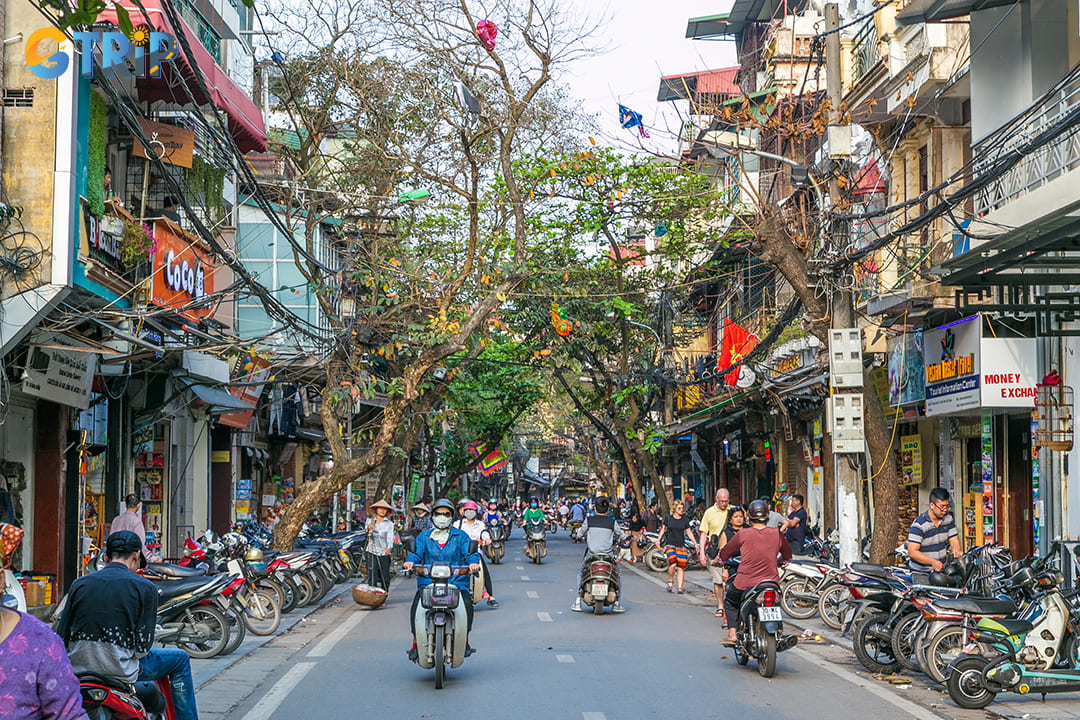
The Hanoi Old Quarter is a maze of narrow streets brimming with history
Hoan Kiem Lake (1.9 km)
Situated approximately 1.9 kilometers from Ha Noi Station, Hoan Kiem Lake is a peaceful yet central landmark that plays a significant role in the cultural and historical identity of Hanoi. The lake is a popular spot for locals and tourists, offering a mix of natural beauty and legend.
Notable spots:
- Ngoc Son Temple: Located on Jade Island, accessible via the iconic red Huc Bridge.
- Turtle Tower: Symbolizing the legendary tale of Emperor Le Loi and the mystical turtle.
- Walking Street: On weekends, the area around the lake becomes a pedestrian zone, hosting street performances, games, and cultural exhibitions.
Activities:
- Early morning workout around the lake.
- Evening walks to enjoy the illuminated surroundings.
- Sampling street food from nearby vendors, including sticky rice dishes and banh mi.

The lake is a popular spot for locals and tourists, offering a mix of natural beauty and legend
Temple of Literature (1.6 km)
Roughly 1.6 kilometers from Ha Noi Station, the Temple of Literature is Vietnam's first national university, established in 1070. This ancient complex is dedicated to Confucius and symbolizes Vietnam’s rich academic and cultural history.
Highlights:
- The Five Courtyards: Each represents a different stage of learning and scholarship.
- Stelae of Doctors: Stone stelae bearing the names of scholars from the 15th to 18th centuries. These are recognized as part of the UNESCO Memory of the World program.
- Van Mieu Gate: The entrance showcasing intricate traditional architecture.
Tips:
- Visit in the early morning to avoid crowds.
- Combine your visit with the Vietnam Fine Arts Museum, located nearby, for a deeper cultural experience.
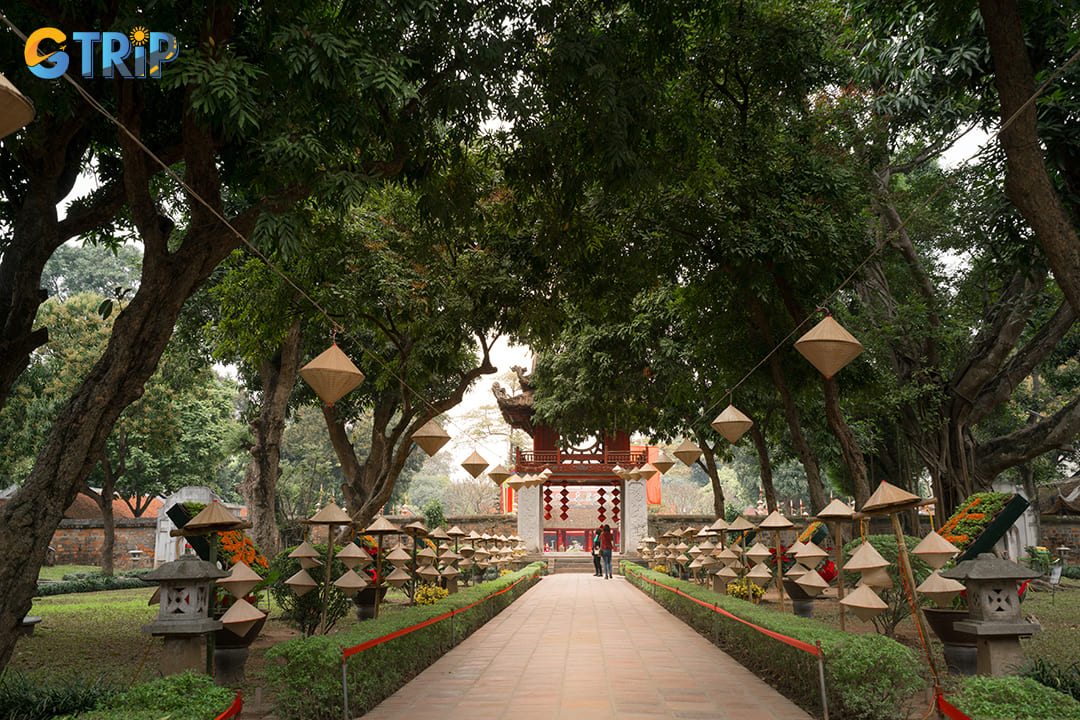
Temple of Literature is dedicated to Confucius and symbolizes Vietnam’s rich academic and cultural history
Hanoi Opera House (2.3 km)
Located about 2.3 kilometers from Ha Noi Station, the Hanoi Opera House stands as a testament to French colonial architecture. Completed in 1911, the Opera House has hosted numerous cultural performances and remains a premier venue for the arts in Vietnam.
Architecture & design:
- Modeled after the Palais Garnier in Paris, the Opera House features French Renaissance architectural elements combined with Vietnamese cultural motifs.
- The interior boasts grand staircases, intricate chandeliers, and decorative ceilings that reflect European opulence.
Experience:
- Attend a performance of traditional Vietnamese opera or contemporary dance.
- Guided tours are occasionally available, offering insights into the building’s history and architecture.
- Capture photographs of the Opera House in the early morning when the square is less crowded.

The Opera House has hosted numerous cultural performances and remains a premier venue for the arts in Vietnam
Exploring the nearby attractions of Ha Noi Station is an opportunity to immerse yourself in the multifaceted cultural landscape of Hanoi. From the bustling alleys of the Old Quarter to the serene paths around Hoan Kiem Lake, each site offers a unique glimpse into the city's rich history and contemporary charm. These nearby attractions are a gateway to understanding Hanoi beyond its station walls.
FAQs when visiting Ha Noi Station
In this section, we'll address some of the most frequently asked questions and common queries related to Ha Noi Station. These questions are curated from real user searches, offering valuable insights for travelers and tourists looking for reliable, practical information.
- Is there luggage storage available at Ha Noi Station?
Yes, the station has luggage storage services. You can leave your bags at designated counters for a small fee. It’s best to check the specific rates and operating hours at the station.
- Are there dining options inside Ha Noi Station?
Yes, there are small cafes, convenience stores, and street food vendors around the station. However, for a more extensive dining experience, you may need to explore nearby restaurants outside the station.
- Is wi-fi available at Ha Noi Station?
Yes, free wi-fi is available in the main waiting areas. However, the connection might be unstable during peak hours, so having a local SIM card with data is recommended.
- What should I do if I miss my train?
If you miss your train, approach the ticket counter for assistance. Depending on ticket availability, you may be able to change your ticket to the next departure for an additional fee.
- Are there facilities for disabled passengers at Ha Noi Station?
The station has ramps, elevators, and designated waiting areas for disabled passengers. If you need special assistance, it’s advisable to contact the station staff in advance.
- Can I take a bicycle or motorbike on the train from Ha Noi Station?
Yes, Vietnam Railways allows passengers to transport bicycles and motorbikes on certain routes. You need to register in advance, and additional fees apply.
- Is it safe to travel alone at Ha Noi Station, especially at night?
Ha Noi Station is generally safe, but it's wise to stay alert and watch your belongings. If traveling late at night, stick to well-lit areas and use official transportation services.
- How can I find out the platform for my train?
Platform information is displayed on electronic boards inside the station. If you're unsure, ask the station staff for guidance to avoid confusion.
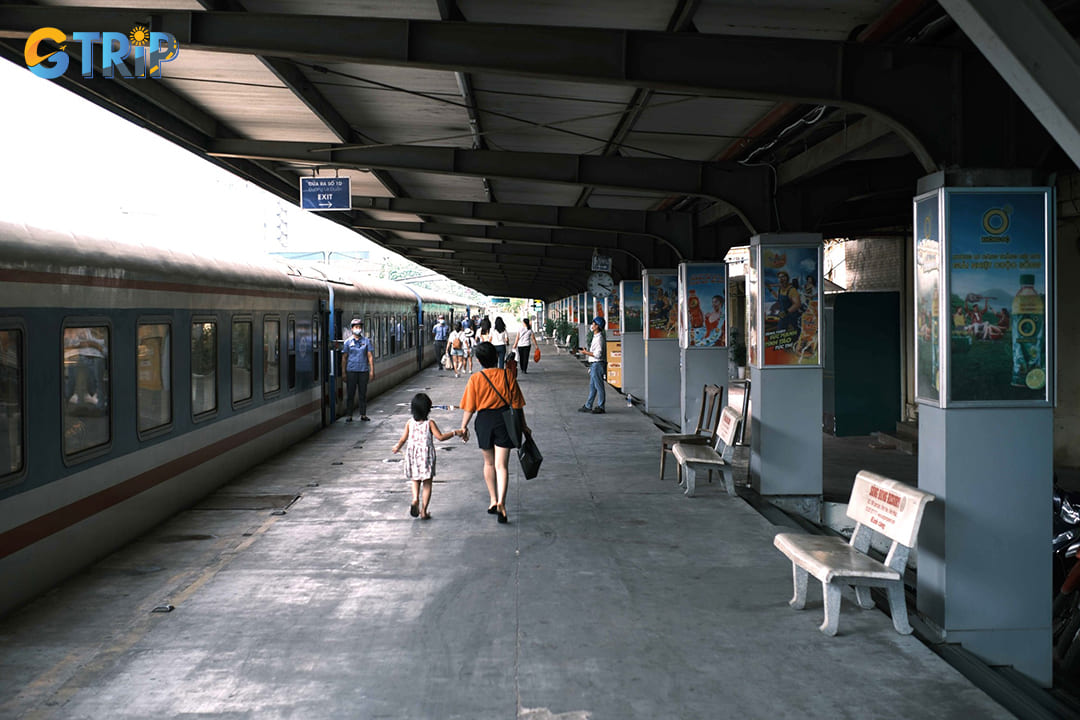
You should read some FAQs before visiting the Hanoi Station
Ha Noi Station stands as a crucial transportation hub, offering not just connectivity but also a glimpse into the cultural heartbeat of Hanoi. By understanding its history, navigating its facilities, and knowing how to make the most of its services, travelers can enrich their experience and streamline their journeys. Knowledge about the station empowers you to navigate the station more confidently. To further enhance your travel plans, consider exploring more about tours from GTrip - Vietnam Travel Agency, which will help you make your tour more exciting.

